East Coulee Alberta – 1992
The Red Deer River valley is like a magnet to me. It’s an oddly beautiful place and I love the interesting landscapes, but it’s also home to a good number of historical sites that can be explored. On this trip I take a look at the East Coulee area which is home to a number of old coal mines and an interesting combination road/rail bridge.
The images here were taken in 1992 and were scanned from 35mm prints. Compare the views here with ones we took in 2012 (link below).
The first thing we see on entering the area is the historic Atlas Mine, its imposing tipple looming high over us. The very last operating coal mine in the Red Deer River Valley, they loaded rail cars here into the late 1970s (others have told me the early 1980s). After shutting down the complex stood abandoned for a number of years prior to it becoming a protected historical site a bit later in the 1980s. Thank goodness as I am sure it wouldn’t have been long before the place succumbed to the elements or was vandalized.
In the ensuing years the site has been cleaned up and fixed and made accessible to visitors. However, during the time I was there not much visual work had been done, so it looked very much as left when the mine shut down. There was lots of equipment scattered about (but behind high fences) and everything had that look – you know, like they just stopped work and up and left one day. The buildings seen here date from the 1930s and are the last of their kind in Canada.
To the west of the Atlas is the much photographed East Coulee road/rail bridge. The structure was built to allow trains to access the mines (and grain elevator) that were located on the south side of the Red Deer River. It was also used by autos and I assume workers heading into the mines. At the time of my visit the last train would have traversed the bridge some dozen years earlier. It’s not clear if it was closed to car traffic immediately after that.
On our visit in 2012 the bridge deck was rather overgrown and the planks rotted looking, but in 1992 it was clear and everything looked solid. The bridge itself was built around the time the mines here opened, so around 1936, although others have told me 1948. I think those people might be wrong – I believed it was damage by ice that year and rebuilt.
The abandoned Murray Mine is located nearby. Opened in 1936, it closed in 1959, making it one of the last to operate in the valley – perhaps two or three others struggled through the 1960s and one remained in the 1970s (the Atlas next door). Not much remains here but if you look hard you can find the opening (sealed), some scattered machinery, along with the tramway towers that took spoil and waste away from the mine. They headed to a side valley where there it appears they dumped the slack and rock and other junk. There are no remains of the tipple and processing plant, although this author has seen pictures showing where each was located.
There was a small train yard between the bridge and mine, although it was so overgrown making it hard to spot. Only the occasional switch stand poking out from the thick underbrush confirmed what was here.
The grain elevator mentioned, by the way, was located just east of and north of the Atlas Mine. The two were very close together and it’s an odd mix seeing coal and grain is such close proximity to each other. This elevator shut down and was demolished about the time the Atlas closed. Also nearby was one additional mine, the Western Monarch, which was located just east by the highway that leads south of East Coulee. I did not know it existed at the time of this visit and I only found out about it recently (2012). I am always learning.
An odd thing about coal mines in East Coulee (and the whole area) is that their output was almost exclusively for heating coal and very little if any was used for industrial purposes. Because of this the mines were never that huge and had sometimes they very long service lives. Many only operated seasonally.
Because of the market, much of this coal was shipped in boxcars instead of hoppers which may seem odd (although I have seen one picture showing a hopper at the Atlas). The nature of the product dictated that it needed to be shipped covered and if exposed to the elements it would break down quickly. It’s possible the Atlas was the very last that used boxcars for coal loading. Interestingly, grain was often shipped in boxcars as well, well into the 1990s in fact.
The Drumheller area/Red Deer River valley was once home to countless coal mines. Hundreds I am told. some small one man operations, some large like the Atlas. Coal from the valley was shipped all over Western Canada and perhaps even beyond.
To see the East Coulee bridge in 2012…
East Coulee road/rail bridge.
To see the Atlas Mine in 2012…
Historic Atlas Mine.
To see the Murray Mine in 2012…
Abandoned Murray Mine.
If you wish more information on this place, by all means contact us!
Date: September 1992.
Location: East Coulee Alberta.
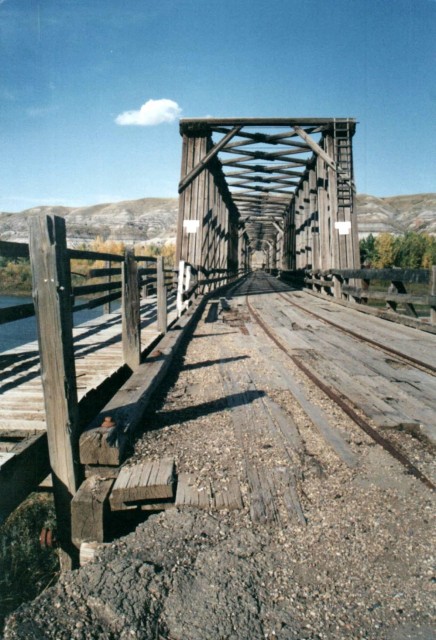
The East Coulee bridge carried both autos and trains.
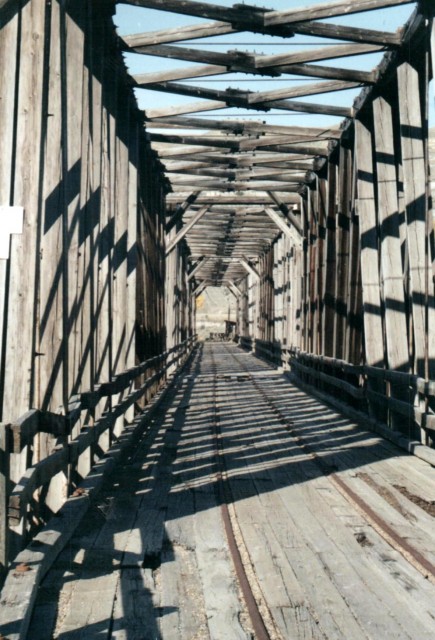
On our visit in 2012 the deck had a lot of vegetation on it.
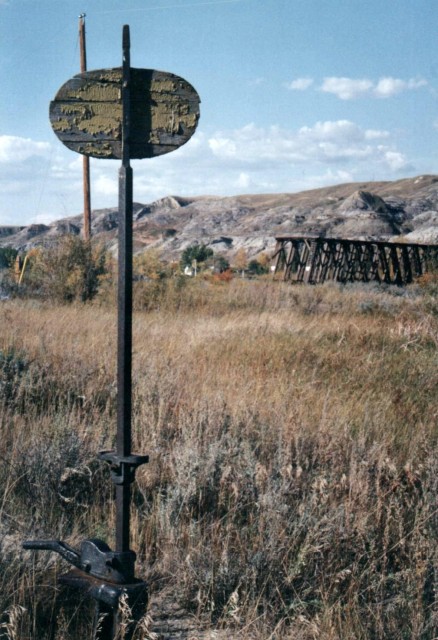
Near the mine looking back at the bridge.
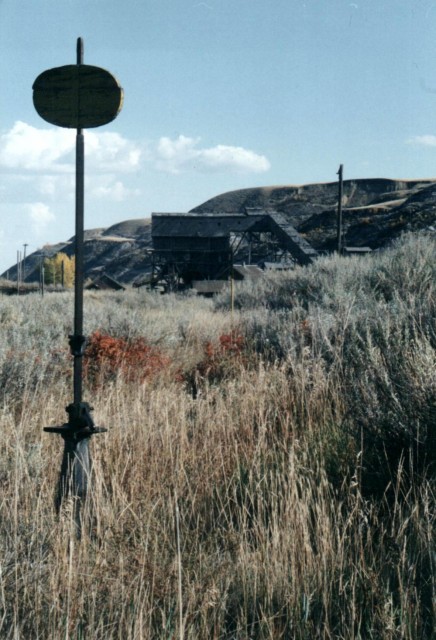
Near the bridge looking back at the Atlas Mine.
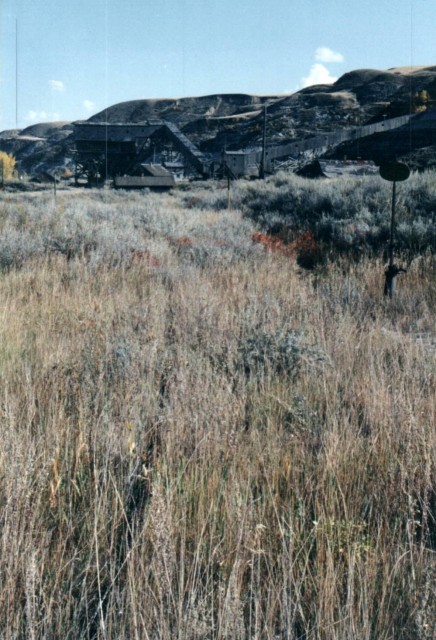
There are some train tracks here…
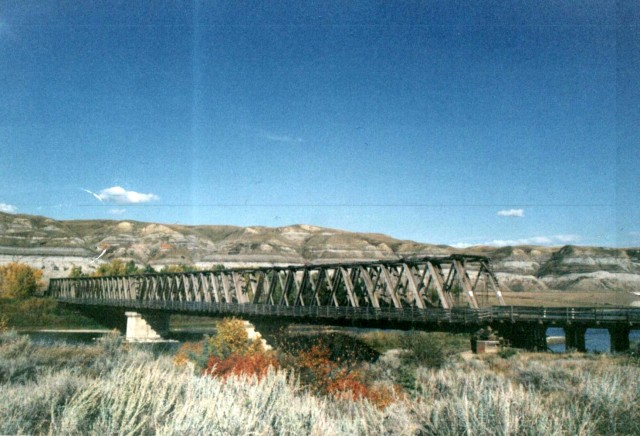
At the time of this picture the bridge would have last seen a train some dozen years earlier.
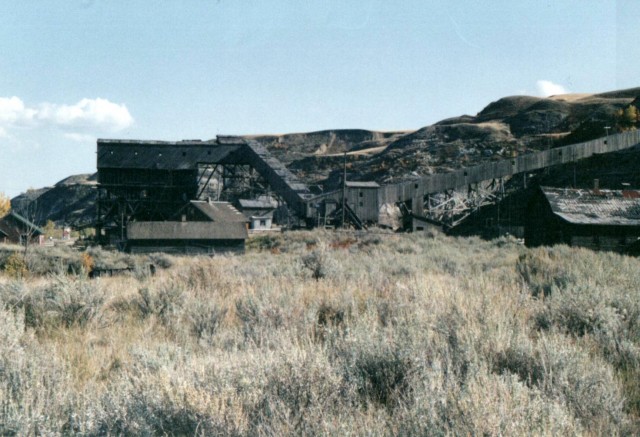
A closeup of the Atlas Mine.
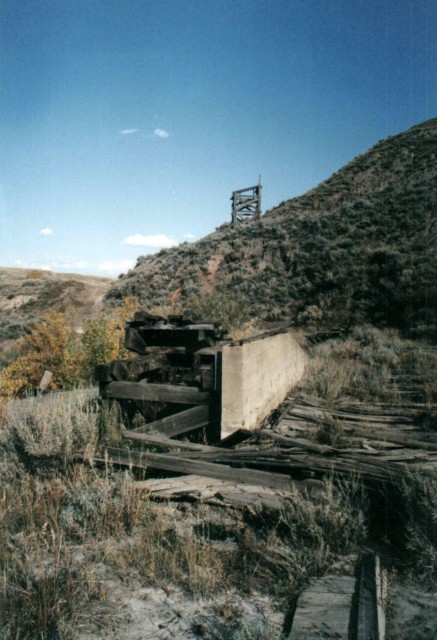
Remains of the Murray Mine just west of the Atlas.
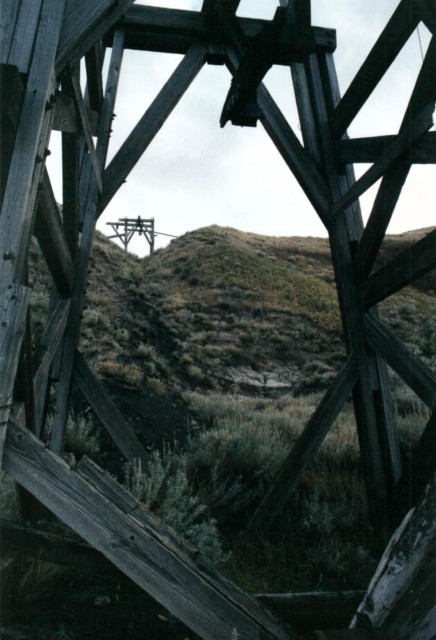
Tram towers at the Murray Mine.
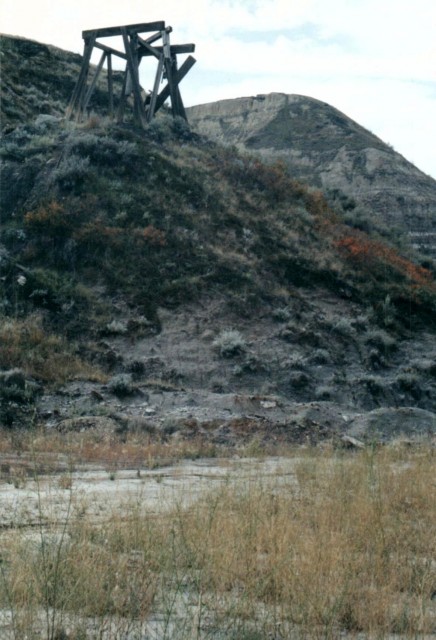
The tramway carried spoil and mine waste to a dump.
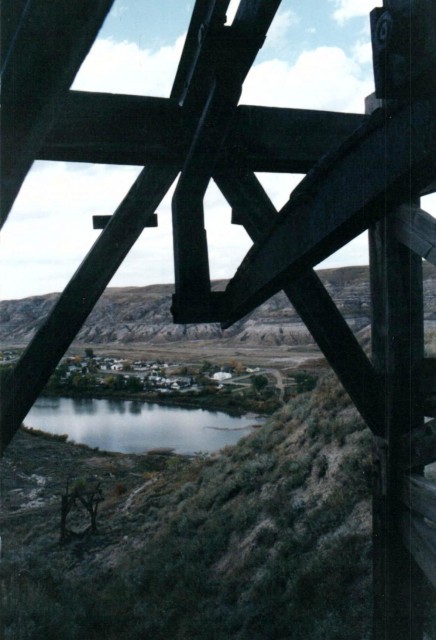
At the top of the tramway – East Coulee is seen in back.
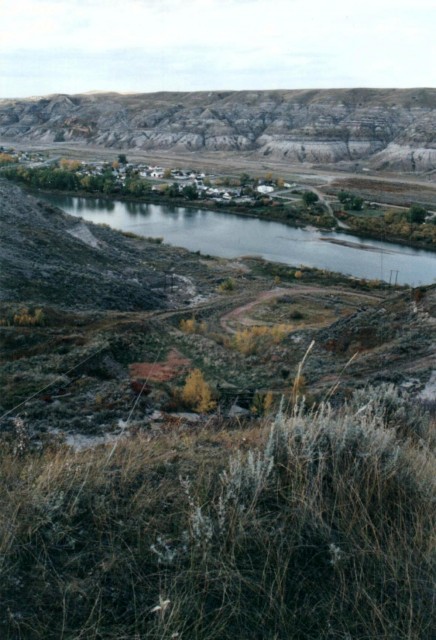
The Murray Mine tipple sat on the flats near the river.
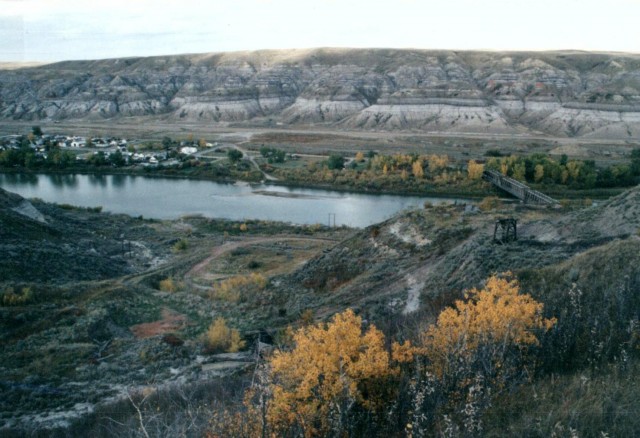
The Murray Mine opening is on the slope below.
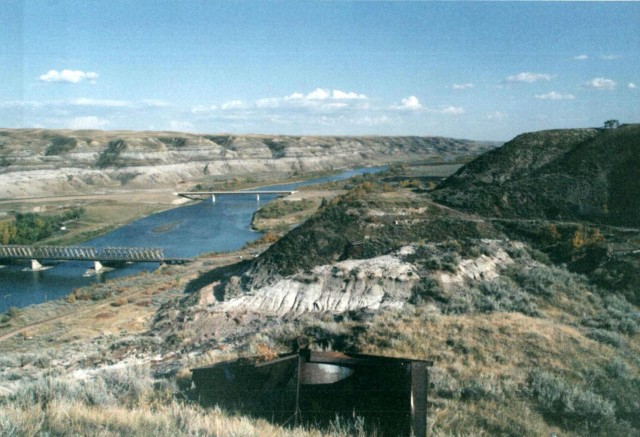
Looking east up the Red Deer River valley.
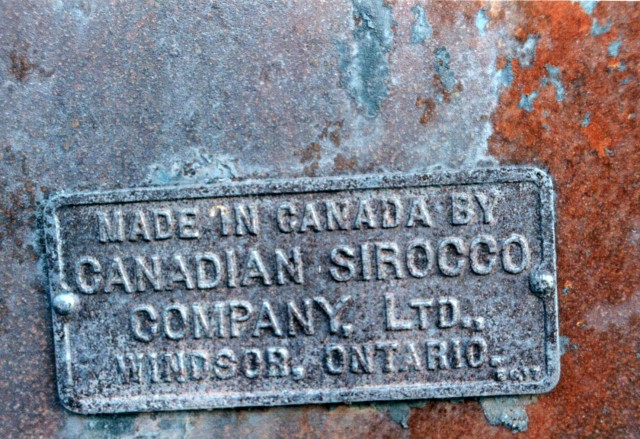
A tram bucket made by the Canadian Sirocco Company, Windsor Ontario.

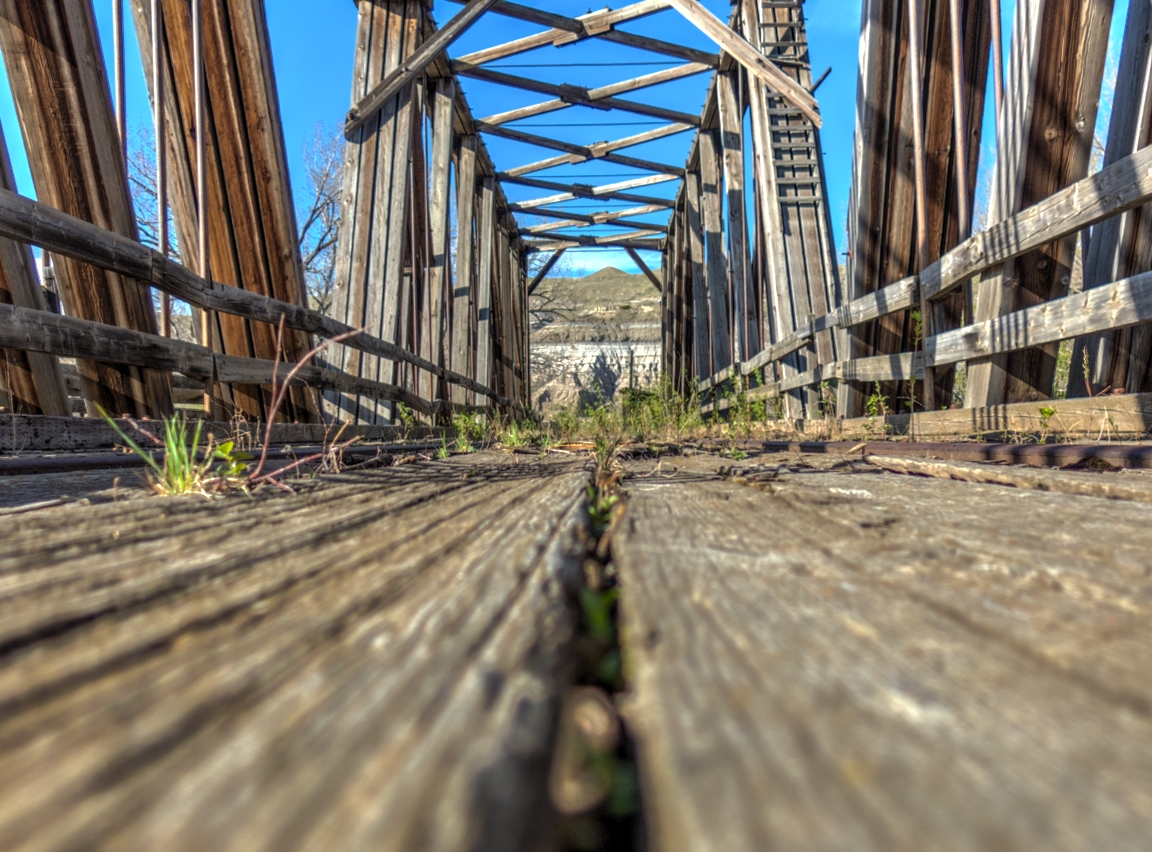
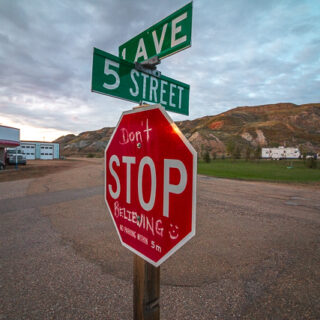
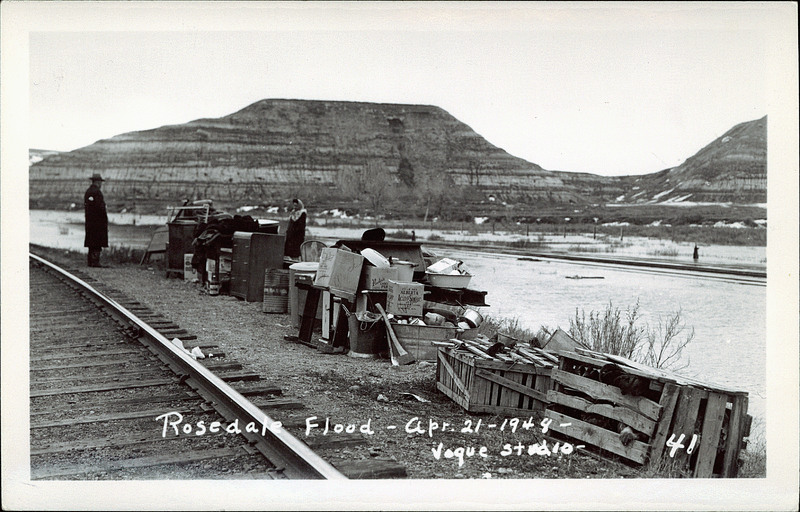
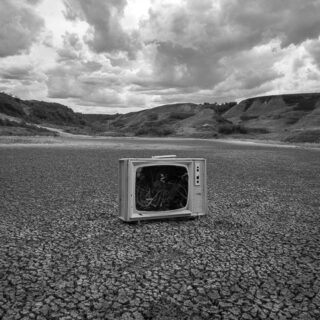
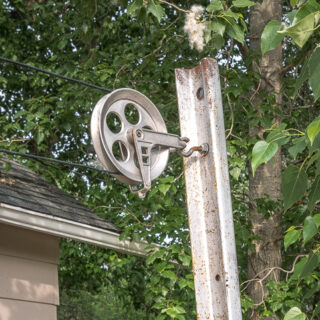
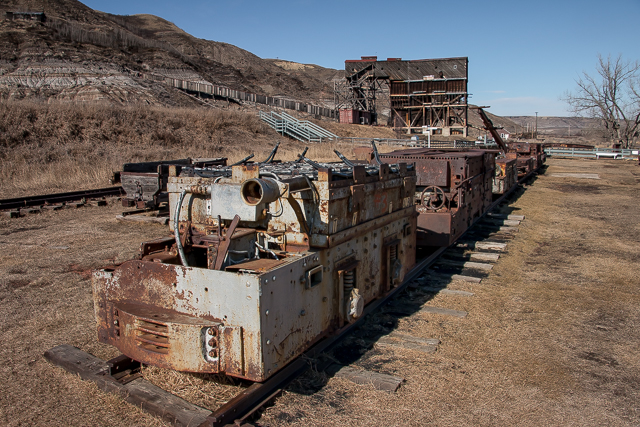
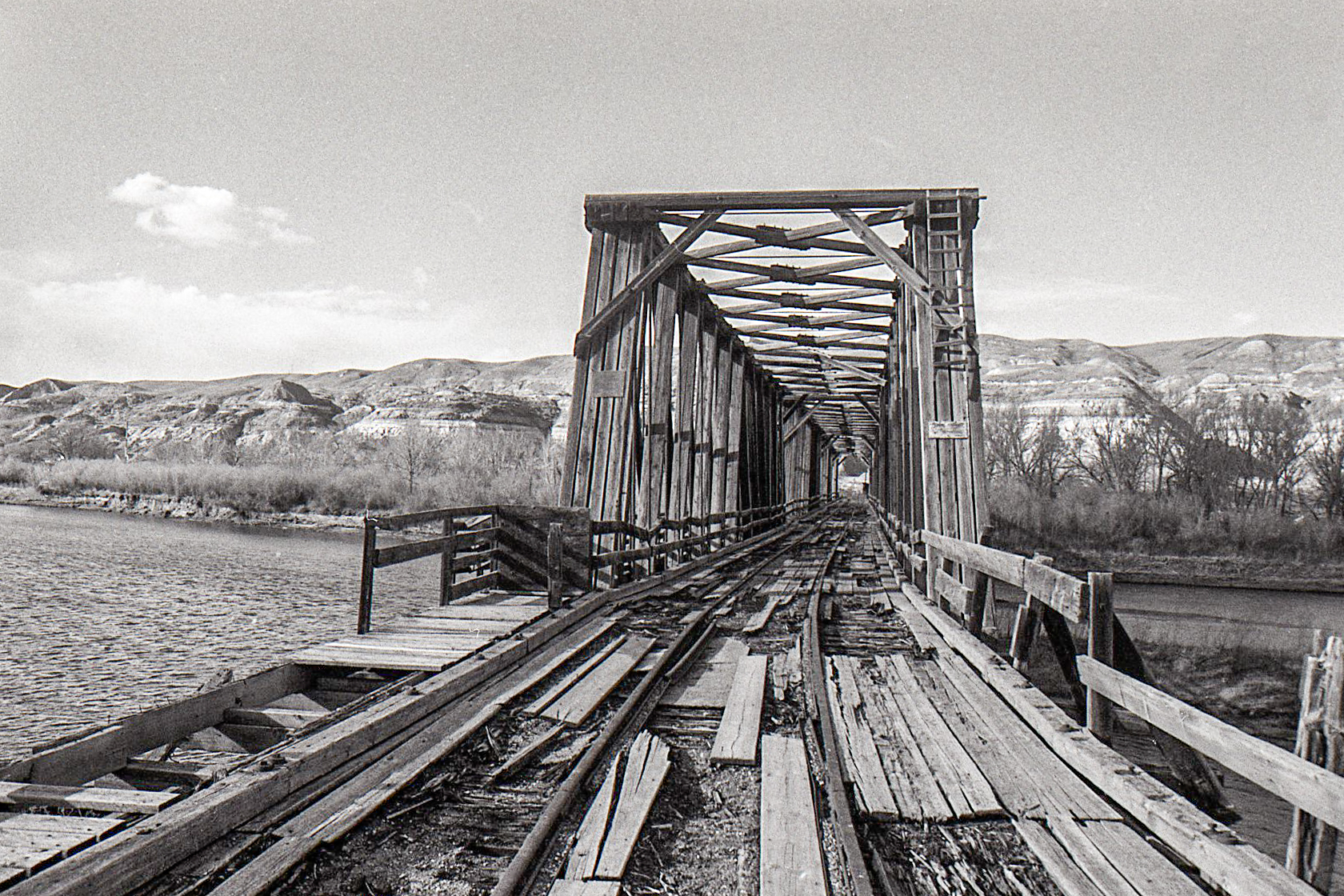
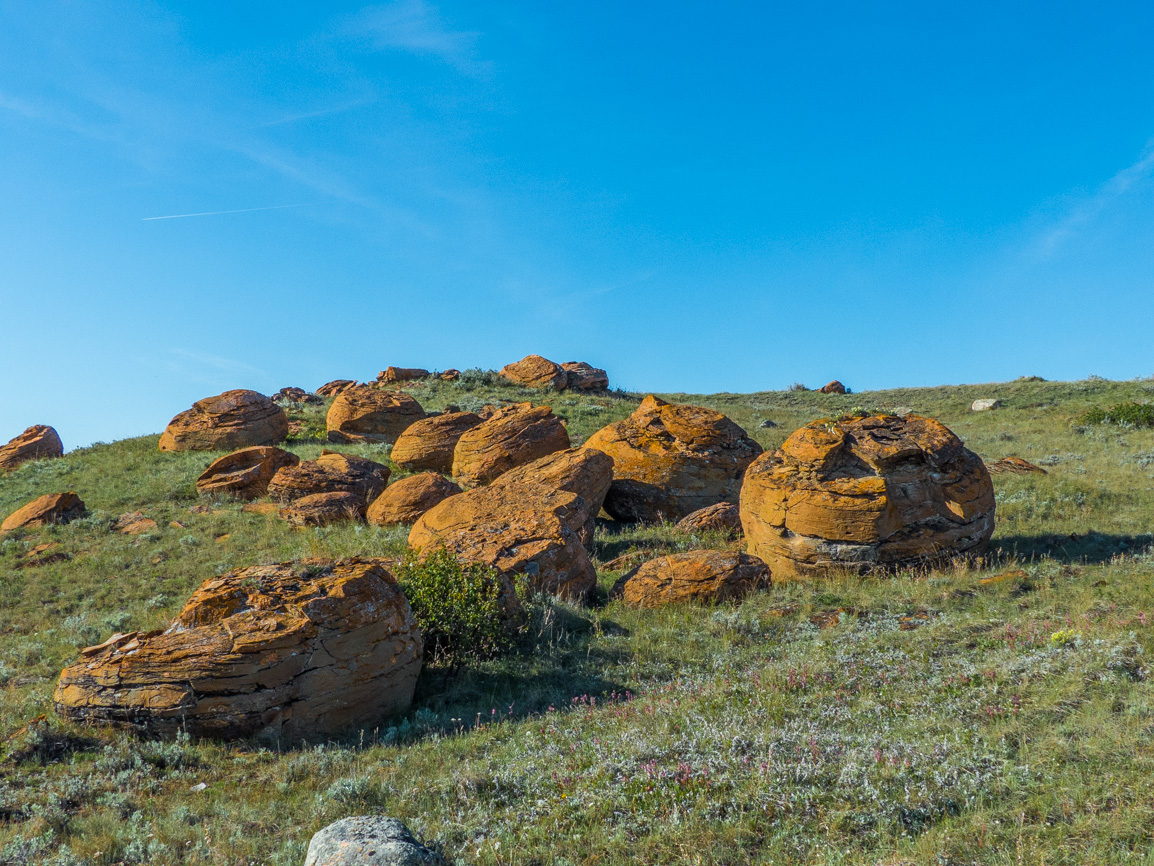
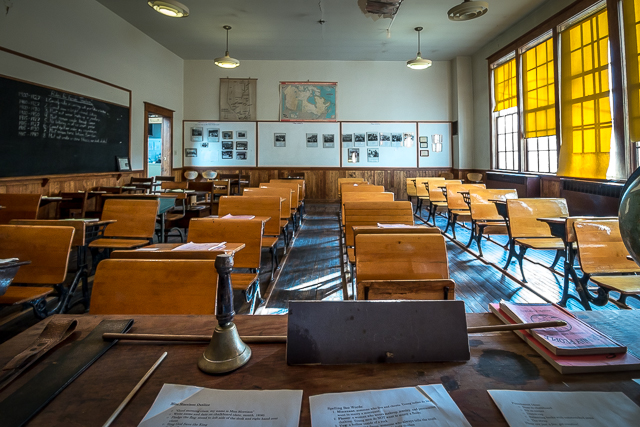
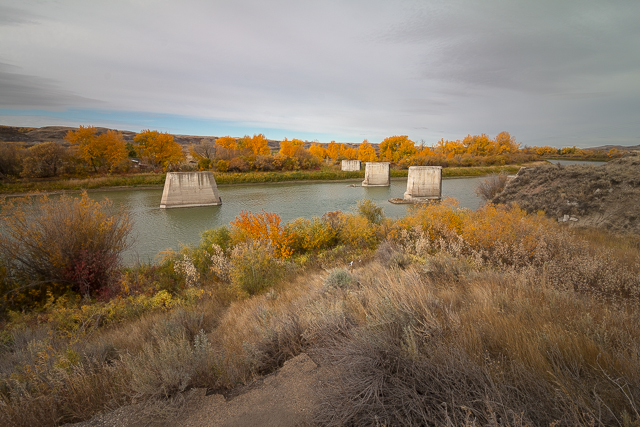
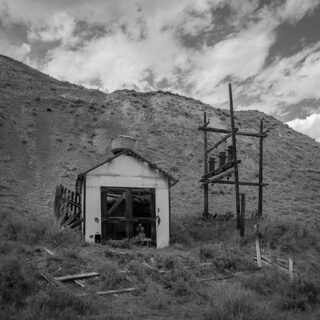
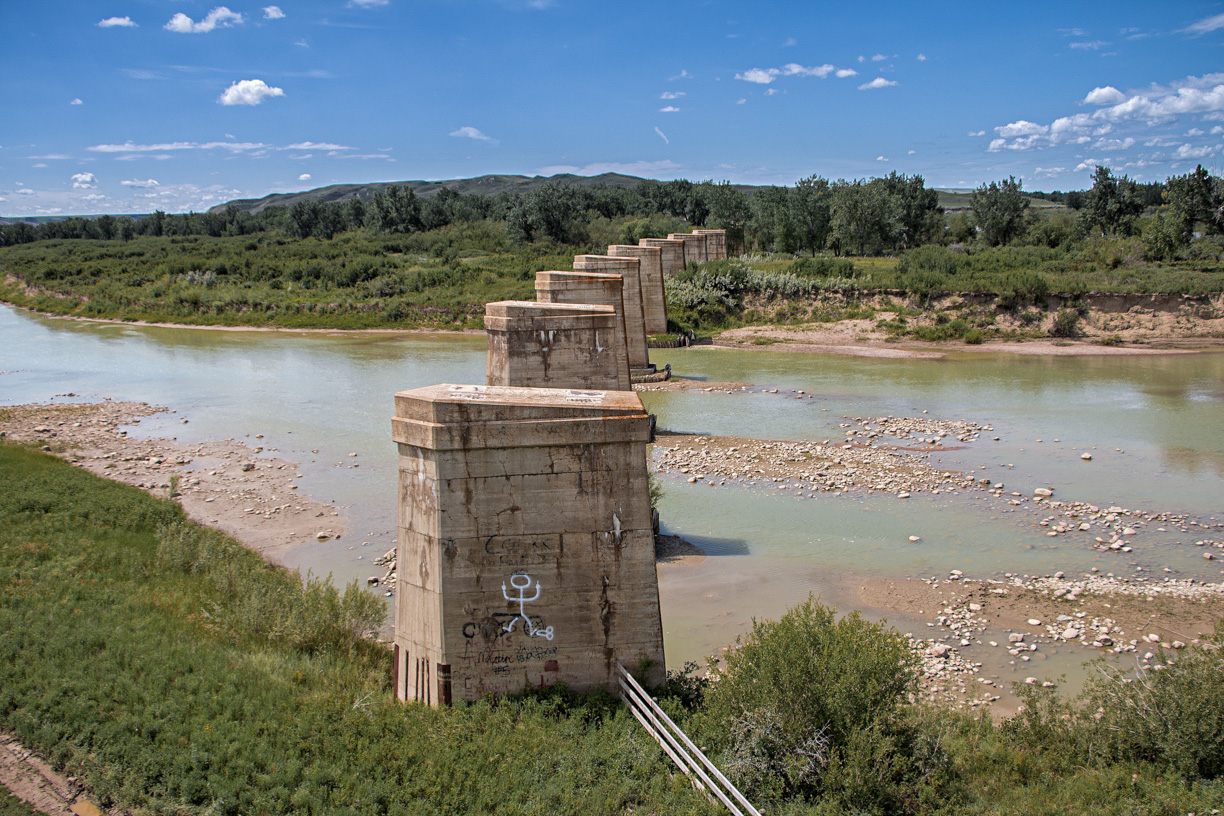
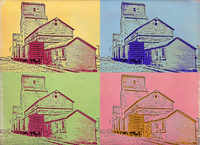






My father grew up in East Coulee Alberta. He was born in 1939. I can ask him about the bridge. My Mother is from Drumheller
Sure, if he has anything to add, we’d love to hear from him. Thanks for commenting!
Fantastic bridge pictures Chris and Connie. I first walked on the bridge in l988. My grandfather, Jim Murray’s family house on about an acre was by the bridge on the East Coulee side. That bridge is one of a kind!
It sure is unique.
I’ve driven across the old bridge quite a few times, between at least ’77 to when the new bridge was already present. Now, there is no way I’d even want to walk out on it! Somewhere, I have photos of the old bridge; the wooden beams used to build it were huge. Unfortunately two moves in the last two years have led to those photos being packed away in some mysterious place. Hope to find them….
If you ever find those photos, Connie and myself and the readers of this blog would no doubt love to see them. Thanks for sharing!
The Monarch Mine was just east of the Atlas but there is nothing really in the way of remains to identify where it was.
I lived in the monarch mining camp just above the entrance to the mine. My father was the bookkeeper at the atlas and Monarch mine for about 6 years from 67 to 72. The Monarch was bulldozed over and nothing remains. about 1 km south on the road that the new bridge takes you. There is a fork in the road at the bottom of the first hill the monarch was on the left on the hill. A wonderful place to grow as a child so long ago miss it very much. Your article has made me mark my calendar to return this summer for a visit.
Fantastic! The Monarch is often overshadowed by the Atlas. On Google Earth, one can see what looks to be faint lines, a grid of them, perhaps marking old roads just east of where the Monarch Tipple was. I suspect this is where worker’s housing was. You won’t regret revisiting the place, I’m sure of that.
My mother managed a restaurant in the hotel in the Monarch area in 1949 or 1950 and again in 1956. This hotel was moved to Hussar in 1959. I have pictures of it being moved. There is nothing there now. At that time there were dozens of houses.
It’s amazing what was, but now gone and forgotten. Only a few folks know about Monarch, which is a bit sad. But time travels on.
There are some pictures to be found at the Glenbow picture archive and these show the bridge in 1948 with no roadway decking.
Interesting, I saw those images you mentioned and indeed it’s clear there is no roadway on the bridge at that date. This adds to the mystery and so far no one can answer when the bridge was opened to auto traffic and when it was closed to the same. We know it hosted trains from the time of its opening until the late 1970s or perhaps early 1980s. I first saw it in 1992 (the pics you see here) and it looked like the bridge had been unused for some time at that point.